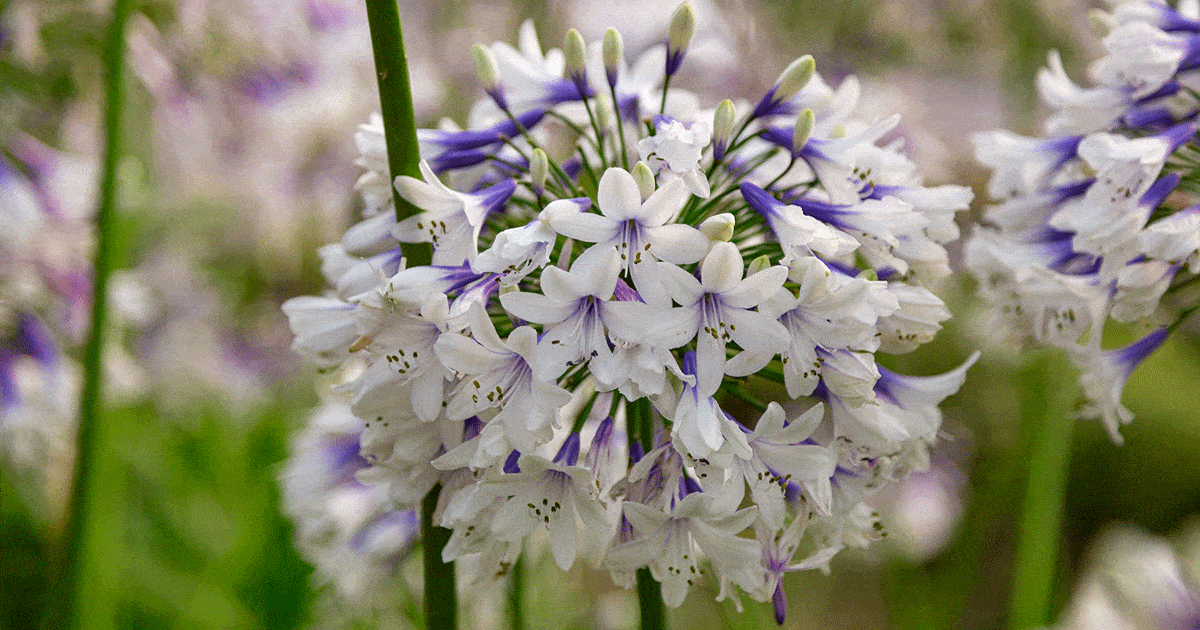Agapanthus Expanding Problems: Soil, Sunlight, and Watering
Unleashing the Secret to Effective Agapanthus Farming: Idea for a Flourishing Garden
In the world of horticulture, cultivating agapanthus efficiently requires a critical technique that encompasses different elements of plant care. By comprehending the subtleties of agapanthus growing, one can create an atmosphere where these plants flourish and flower perfectly.
Planting Agapanthus: Finest Practices
When growing Agapanthus, proper soil prep work is essential for making sure effective growth and advancement of these attractive flowers. Agapanthus, frequently recognized as Lily of the Nile or African lily, flourishes in well-draining soil with a somewhat acidic to neutral pH degree - Agapanthus. Before planting, it is crucial to change hefty clay dirts with raw material such as compost or peat moss to enhance drain and give essential nutrients for the plants
To plant Agapanthus, select an area that obtains complete sunlight to partial shade, as this will promote healthy development and bountiful blooming. Dig a hole twice the size of the plant's origin round and put the Agapanthus at the same depth it was formerly expanding. Delicately backfill the opening with dirt, weighing down firmly to remove any air pockets around the roots.
Water the newly planted Agapanthus thoroughly and remain to keep the soil uniformly damp, particularly throughout the plant's active expanding season. Agapanthus. Applying a well balanced plant food once a month can better sustain the plant's growth and blooming. By complying with these ideal techniques for planting Agapanthus, you can develop a sensational display of these fascinating flowers in your garden
Suitable Soil Conditions for Agapanthus
For optimal growth and growing success of Agapanthus plants, making certain the dirt conditions are ideal is critical. Agapanthus likes soil that is abundant in nutrients, so incorporating a well balanced fertilizer throughout the expanding season can advertise healthy development and dynamic blossoms.

Watering and Fertilizing Tips
To ensure healthy and balanced development and lively blossoms, correct watering and feeding strategies are important for successful Agapanthus growing. Agapanthus plants benefit from routine watering, particularly during the growing season. It is recommended to water deeply once a week, guaranteeing the soil is moist but not waterlogged. Throughout heat or in pots, even more regular watering might be needed to avoid the soil from drying out completely.
When it concerns fertilizing Agapanthus, a well balanced fertilizer with equivalent components nitrogen, phosphorus, and potassium can be used in the springtime to advertise healthy and balanced development and flowering. Slow-release fertilizers are perfect for providing nutrients progressively over an extensive period. Avoid over-fertilizing, as this can bring about extreme foliage development at the cost of blooms.
In addition, integrating organic issue like compost right into the dirt can improve nutrient degrees and improve dirt structure, assisting in the general health of the Agapanthus plants. By adhering to these watering and fertilizing pointers, gardeners can ensure their Agapanthus plants prosper and produce magnificent screens of flowers.
Trimming and Deadheading Techniques
Appropriate pruning and deadheading methods play an look here important duty in preserving the wellness and appearances of Agapanthus plants, complementing the necessary methods of watering and feeding for successful growing. Trimming Agapanthus entails eliminating invested flower heads, dead or yellowing leaves, and general shaping of the plant to advertise better development. Deadheading, the procedure of eliminating discolored flowers, not only boosts the plant's appearance however additionally motivates more blooming.
When deadheading Agapanthus, it is a good idea to trim off the blossom stem at the base making use of sharp, tidy shears. This process redirects the plant's power from seed production back into origin and vegetation growth, promoting a much healthier and a lot more robust plant. Routine deadheading can expand the flowering duration of Agapanthus and prevent self-seeding, which can result in congestion.
In terms of pruning, Agapanthus normally advantages from a light trim after blooming to clean up the plant and encourage their explanation fresh growth. Reducing the invested flower stems and eliminating any kind of dead or broken vegetation aids maintain the plant's vigor and overall appearance. Nevertheless, it is vital to avoid cutting into the crown of the plant, as this can weaken its health.

Protecting Agapanthus From Pests and Diseases
Implementing reliable insect and condition administration techniques is crucial to securing the health and vigor of Agapanthus plants in cultivation. One usual insect that influences Agapanthus is the Agapanthus borer, a caterpillar that tunnels right into the plant, triggering damage to the blossoms and leaves.
In enhancement to pests, Agapanthus are vulnerable to illness such as root rot and fungal fallen leave areas. By remaining cautious and addressing pest and disease problems quickly, gardeners can assist their Agapanthus prosper and grow.

Verdict
Finally, successful view publisher site farming of agapanthus needs correct planting methods, excellent dirt conditions, adequate watering and feeding, routine trimming and deadheading, and protection from parasites and conditions. By adhering to these suggestions and tricks, garden enthusiasts can make sure a flourishing garden loaded with lovely agapanthus blooms. Agapanthus. Remember to maintain consistent treatment and focus to detail to advertise the health and long life of these spectacular plants
When growing Agapanthus, proper dirt prep work is important for guaranteeing effective growth and advancement of these beautiful blossoms.Water the freshly planted Agapanthus extensively and continue to keep the dirt evenly damp, specifically throughout the plant's active growing period.For optimum development and flowering success of Agapanthus plants, ensuring the dirt problems are suitable is vital. When planting or transplanting Agapanthus, make sure the soil is well-prepared to provide the essential structure for the plants to establish themselves effectively. One usual pest that influences Agapanthus is the Agapanthus borer, a caterpillar that tunnels into the plant, creating damage to the leaves and blossoms.